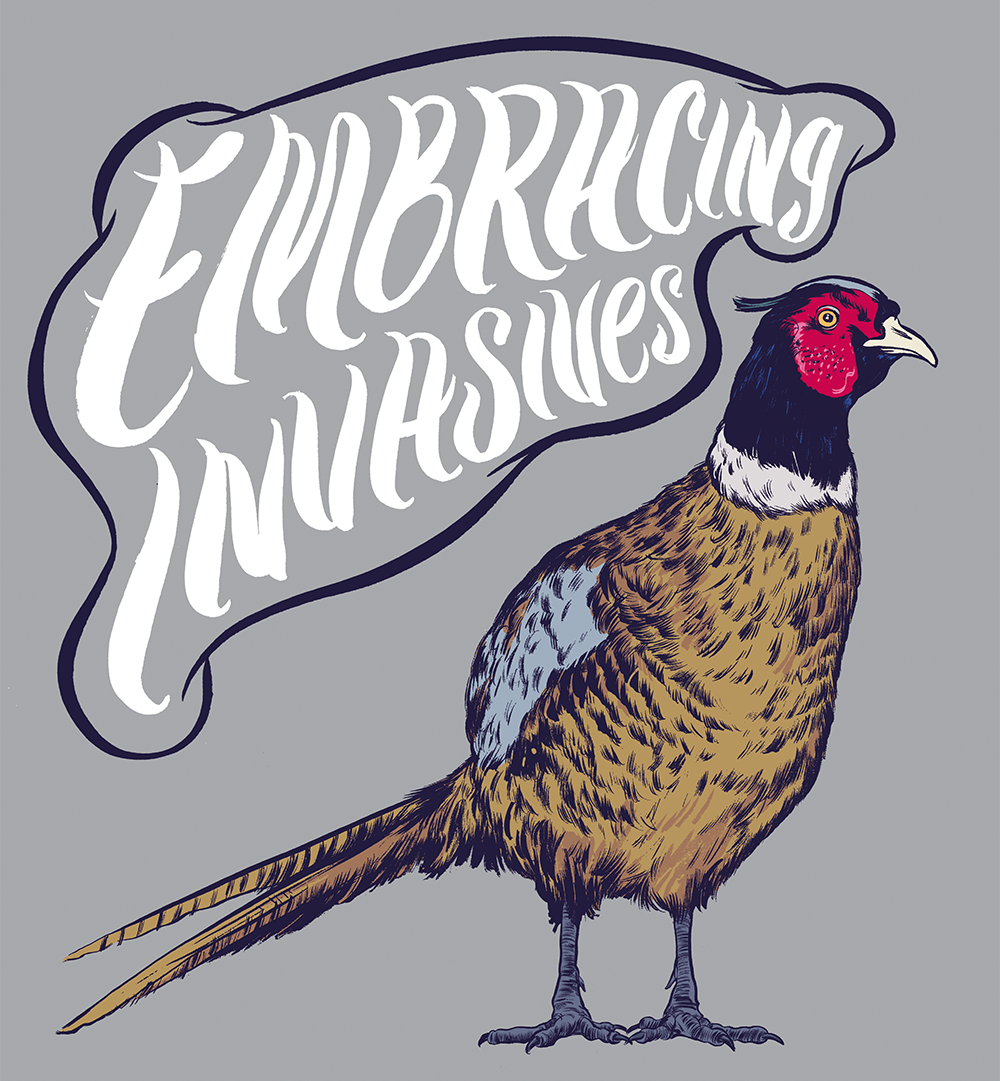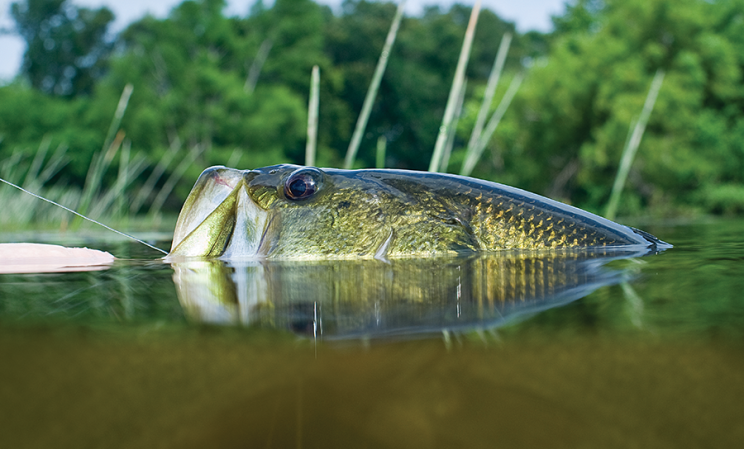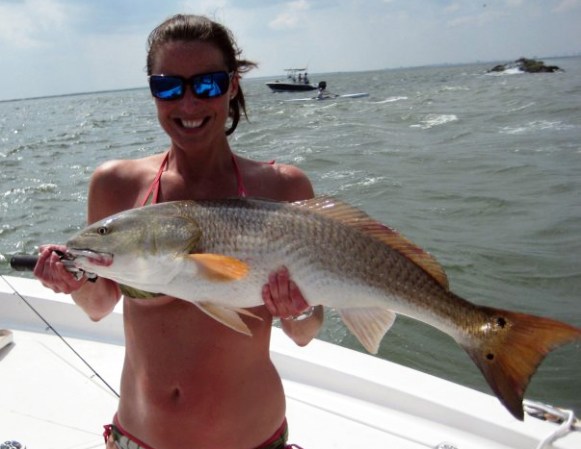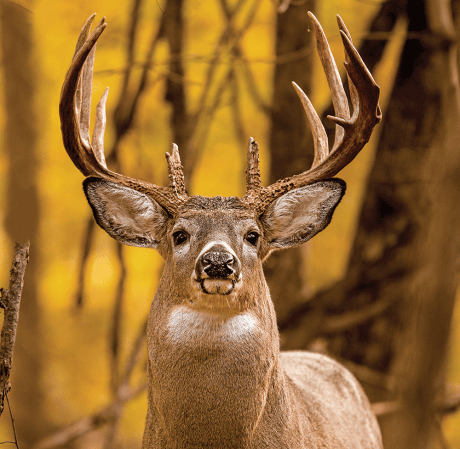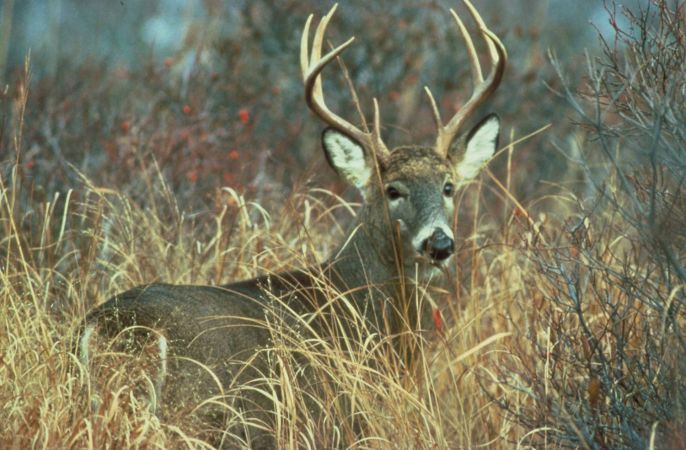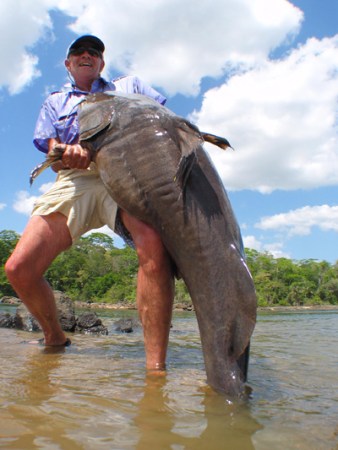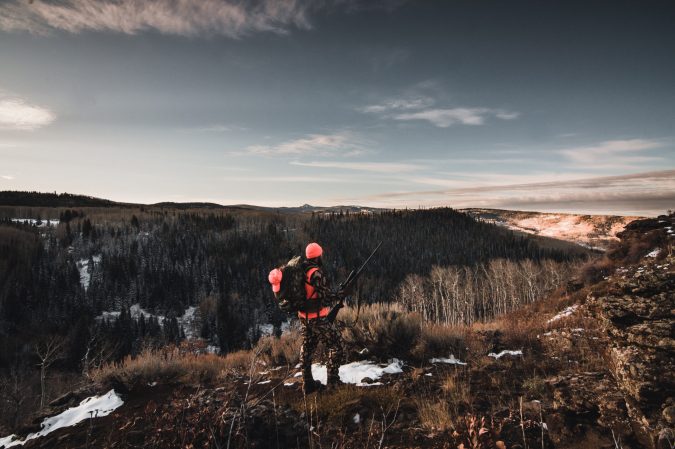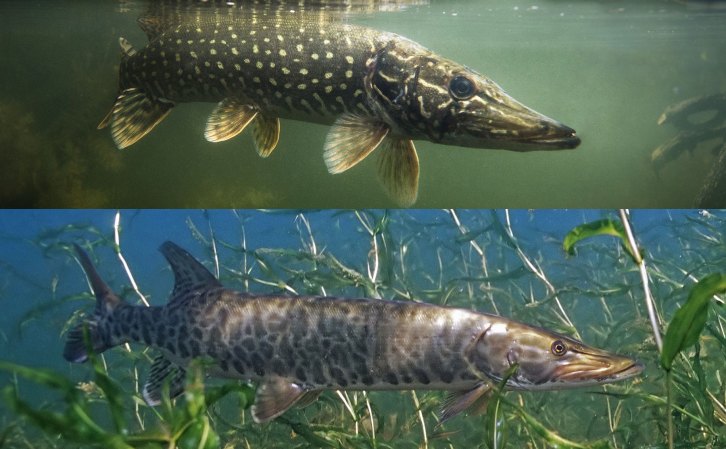For readers who follow environmental headlines, it may not be news that the list of the world’s 100 worst invasive species includes wild boar, feral goats, and rabbits. however, did you know that According to the Nature Conservancy, invasives (plants, fish, and animals) have contributed to the decline of 42 percent of all threatened and endangered species in the United States? Did you also know that the U.s. spends upwards of $120 billion a year attempting to control them? and were you aware that the list also includes trout, pike, and largemouth bass?
First, a clarification of terms. According to the United States Department of Agriculture (USDA), there is a distinct difference between invasive and non-native (alien) species.
It defines “invasive species” as, “plants, animals, or pathogens that are non-native (or alien) to the ecosystem under consideration and whose introduction causes or is likely to cause harm.”
Non-native species are species that have been introduced or expanded into new areas that have not historically been part of their native range, but aren’t necessarily harmful.
So let this story, then, serve as something of a cautionary tale regarding the wholesale condemnation of all non-native species. Because, truth be known, one conservationist’s invasive species might be another’s favorite hunting or fishing species. To prove the point, we decided to be contrarians for a moment and bring you this list of 10 nonindigenous species that, though they might do harm to the natural balance of their non-native ecosystem, also enrich our sporting lives.
1. RING-NECKED PHEASANT
Even though the ring-necked pheasant is not native to North America, it is the official state bird of South Dakota. The love affair American hunters have with pheasants began in 1881, with the first successful introduction of the game birds. An Oregon man named Owen Nickerson Denny, a former U.S. consul general in Shanghai, China, shipped 60 Chinese pheasants to Port Townsend, Washington. Few, if any, of those first birds survived; however, Denny released more birds in 1882 and 1884, and they soon began to flourish in Oregon’s Willamette Valley. From there the birds were transplanted to other regions, often by state game departments.
Today, the pheasants have been introduced across the continental U.S., as well as in Mexico and Hawaii, and there are self-sustaining populations in much of the Midwest and West. During the 2014 hunting season alone, South Dakota Game, Fish and Parks reports, 1,199,804 pheasants were shot by hunters (504,144 by residents, 695,660 by nonresidents). In South Dakota, pheasant hunting generates an estimated $223 million in retail economic impact annually, and an additional $111 million in salaries annually. Those revenues are the result of approximately 62,000 resident and 79,000 nonresident pheasant hunters purchasing licenses, fuel, food, and lodging during the state’s three-month hunting season. Plain and simple, pheasants are big business in South Dakota. That’s why Pheasants Forever recently established a regional headquarters in Brookings, South Dakota, with the goal of sustaining a 1.5 million rooster harvest.
Jared Wiklund, public-relations specialist for Pheasants Forever, says, “With an estimated 2 million pheasant hunters in North America, the ring-necked pheasant has progressed from an introduced, non-native species to an iconic resident of the Great Plains.”
The ring-necked pheasant is not included on the USDA list, but rather is commonly referred to as a beneficial “non-native species” by state agencies and biologists throughout the country. Also, as part of the federal Farm Bill, the USDA has incentivized conservation practices that are designed to increase populations of this upland game bird. “And in fact,” Wiklund says, “the projects Pheasants Forever implements also benefit deer, waterfowl, turkeys, songbirds, endangered species, and water quality.”
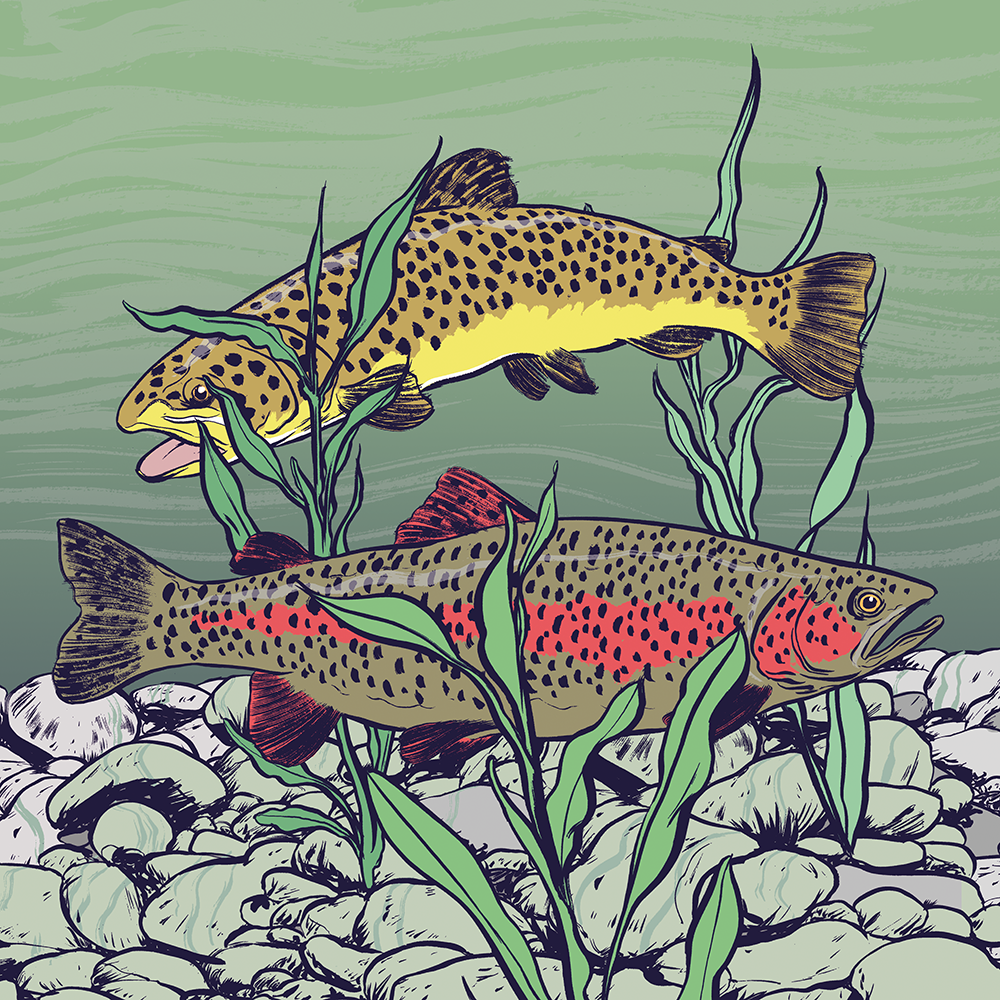
2. TROUT
Considering what deforestation and pollution did to native trout populations in North America in the 18th and 19th centuries, it isn’t surprising that some fishermen decided to transplant European brown trout to our lakes and streams. What is surprising is that it took them so long. Many historians say that the first successful introduction of browns to the U.S. took place in April 1884, when the U.S. Fish Commission released 4,900 brown trout fry into the Baldwin River, a tributary of the Pere Marquette River in Michigan. Soon thereafter, brown trout were planted across the U.S.
These fish expanded their habitat and devoured some of the native brook trout that were then still in the East. They did the same to cutthroat populations in the West. Meanwhile, rainbow trout from the West Coast were spawned in hatcheries and moved east. Many people say that the rainbow is a native of the Northwest, but some taxonomists point out that rainbows have been interbred so much in hatcheries that what we have now are not native to any place, but are a human-made concoction. If you think gun writers can be pedantic, try getting a few taxonomists together.
Though brown and rainbow trout now reign supreme from New York’s Beaverkill to Michigan’s Pere Marquette to Montana’s Madison River, native trout are seeing a resurgence as fisheries managers restock various subspecies of cutthroat and brook trout to their native ranges. Some streams in the West have even been poisoned to kill non-native brook and rainbow trout so native cutthroats can be restocked. Overall, there is no doubt fishermen have benefitted immeasurably from these introductions. Trout fishing attracted 7.2 million anglers, resulting in 76 million angler days in 2011, according to the U.S. Fish and Wildlife Service’s National Survey of Fishing, Hunting, and Wildlife-Associated Recreation.
3. LARGEMOUTH BASS
We might think of the largemouth as a quintessential American species, and it is, but it has ranged widely. The original range of the largemouth bass was most of the eastern half of the U.S., but it is now found throughout the country. We’ve moved them to farm ponds, swamps, and manmade reservoirs from Georgia to California to Hawaii. This isn’t something environmentalists would put up with today, as the largemouth is a predator with a demonstrated appetite for other species in lakes and streams.
There has been a huge upside to our propensity to move this species around. Some surveys list bass fishing as one of our most popular participation sports. According to the U.S. Fish and Wildlife Service, black bass was the most popular fish species among the 27.1 million anglers who fished freshwater other than the Great Lakes.
Bass fishing isn’t limited to the U.S. The species current range now includes South Africa, Europe, Guam, Japan, New Zealand, and the Philippines.

4. RED FOX
The red fox is native to much of the northeastern part of North America, but it has expanded its range across the continent because of all the environmental changes settlers made to the landscape. Some immigrants from England did introduce European red foxes to the U.S. so they could chase them with hounds, but those red foxes don’t seem to have done a good job of passing on their genes, say the taxonomists. Instead, thanks mostly to farming practices, Eastern American red foxes have now colonized their way to the Pacific.
The red fox’s expansion is a good thing for predator hunters—and for anyone who likes to ride a horse and shout, “Tally-ho.” But trappers lost out after California voters approved a 1998 ballot initiative that completely bans traps on all lands in the state. Ironically, that ban imperiled the endangered clapper rail. Game managers had been using traps to keep the non-native red foxes out of the rail’s nesting grounds, but the ban included even the state’s wildlife agency. It took a lot of political wangling to give game managers an exemption—another example that illustrates why, just as carpenters need hammers and nails, wildlife officials need traps and hunters.
Meanwhile, a steadfast and even growing number of trappers see big benefits to be garnered from this now nationwide species. Gene Garrett, for example, is a Maryland resident who retired to a new vocation—trapping. He focuses on the red fox. I was introduced to him by a friend on a cold November day in 2014. We stopped at his rural Maryland property and found him skinning a fox. “I only caught five red foxes this morning,” he bemoaned. “I’m off pace. Last season I trapped 490 of them.”
5. NORTHERN PIKE
the northern pike has been introduced (much to the dismay of some fisheries biologists) to a lot of lakes and reservoirs in the U.S. The species is native to freshwater fisheries throughout the Northern Hemisphere, from Russia to northern Europe to North America. But they are not native to all the waterways they are now swimming in. For example, they have been stocked in or illegally introduced to many Western lakes and reservoirs. Some fisheries managers have taken drastic measures to remove them. The most infamous of these illegal introductions occurred in California’s Lake Davis. During 1996–97, the California Department of Fish and Game decided to poison the reservoir with rotenone to kill the pike—and all the rest of the fish with them. It didn’t work; some of the pike survived. In 2007, they tried again—this time they lowered the level of the reservoir before poisoning it. But by 2009, anglers were catching pike in Lake Davis again. As with many introduced species, there are costs and benefits to the spread of the pike. With northerns, the chief benefit lies in their popularity with anglers.

6. COYOTE
Myths passed down by Native Americans in the Southwest labeled the coyote a trickster—he’d take any form to win a fight, and though frequently slain in myths, he always came back. Predator hunters and trappers have anecdotes enough to explain the basis of those old tales, and not just in the Southwest.
The coyote’s pre-Colonial range was limited to the southwestern and plains regions of the U.S., Canada, and Mexico. But as wolves were trapped, shot, and poisoned—often by government trappers and programs—coyotes moved in to fill the void. To see how much wolves can impact a coyote population, consider that when wolves were reintroduced to Yellowstone National Park in 1995, the coyote population soon dipped.
But the biggest factor that led to the coyote’s expansion was what European settlers did to the landscape. After they felled forests and tilled the land across much of the Eastern U.S., the coyote thrived. Every state now, except Hawaii, has coyotes for predator hunters to target.
Glynn Riley, a famed federal trapper in Texas, once told me: “The wolf, he’s easy to catch. But the coyote, he’s a versatile and intelligent little rascal. People wonder how the coyote got across the Mississippi. I say he hitched a ride on a tractor trailer.”
7. SIKA DEER
The sika is a deer species native to Japan and other parts of Asia, but they are doing quite well in parts of coastal Maryland, in a few other places in the U.S., and in many other parts of the world. Sika were released on Assateague Island off Maryland’s Dorchester County in the 1920s. Today there are more than 10,000 sika deer in eastern Maryland, and their population is growing so much that Brian Eyler, Maryland Department of Natural Resources’ deer project leader, says his agency is concerned, and has discussed ways to bring the crop-damaging population under control. In 2014, landowner groups went so far as to ask for an extension of the hunting season.
Eyler says, “We have thousands of acres of public land in Maryland that are loaded with sika deer. Some hunters come from out of state to hunt them, but it’s definitely an underutilized resource. The Taylor’s Island and the Fishing Bay wildlife management areas, for example, have more than 25,000 acres of public hunting and have good populations of sika deer.”
Maryland’s Assateague Island National Seashore is also a popular public place to hunt sika. You can find the season dates, bag limits, and other regulations for hunting this non-native species online.
Sika deer are also found on private land, and outfitters sell hunts for this exotic species, also called “little elk.” Because sika bugle (a whistling sound), they can be called in during their September and October rut. The highest population density of sikas is in Maryland’s southern Dorchester County, where there is some hunting pressure for this unique species. They are as highly regarded for the hunting challenge they provide as for their delectable flavor on the dinner table. A sika stag weighs around 90 pounds and stands about 2½ feet tall at its shoulder.
8. FERAL HOGS
Wild pigs are not native to North America, but they are certainly here to stay. The Spanish conquistador Hernando DeSoto first introduced pigs to North America in the 1500s. Eurasian wild boar were later introduced into parts of the U.S. so people could hunt them on fenced properties or enclosures, but many of them escaped and bred with other wild pigs. Today, hybrid populations exist throughout the wild pig’s range.
According to the National Feral Swine Mapping System, in 1982, pigs were found in 17 states; by 2004, they’d made it to 28 states; and in 2012, they were in 36 states. Though many ranchers once saw them only as a problem to be controlled, an increasing number of landowners from Florida to California now sell hunts for wild hogs. There are also many public hunting opportunities from Florida to Texas to Hawaii.
However, before you begin wishing for a quickening of the feral hog migration, take heed of this word of warning from Rick Taylor, a former biologist for Texas Parks & Wildlife (TPWD) who now works for Southwest Land Associates, LLC.
“The feral hog has survived, adapted, and increased in number despite control efforts,” he says. “While it is possible to keep the population in check with continuous control, it is improbable that a population can ever be eradicated within an established range.
“Feral hogs are prolific breeders and can cause considerable damage,” he explains. “They can destroy habitat, and compete directly or indirectly with all other species of wildlife. While many hunters might like hogs as part of their lease, the adverse effects often counter any potential economic incentives.”
But Taylor also sees the benefits of wild hogs. In his upcoming book, On Wild Hogs and Javelinas, he writes, “Hunters in many states such as Texas, California, Florida, and Tennessee consider the feral hog an important sporting commodity. Feral hogs provide an excellent off-season hunting opportunity. They are challenging, extremely intelligent, and wary creatures, and provide very good table fare. Local economies, taxidermists, meat-packing facilities, and many other entities are profiting from this creature.”

9. WHITETAIL DEER
A decade ago, all the hunting magazines were asking if the whitetail deer was going to push the mule deer out of most of its range. That seems less likely now, but it was a real worry then, as whitetails moved from river bottoms to higher elevations in Montana and Idaho. Much of this colonization is due to habitat changes made by humans. Whitetails are edge creatures, and we’ve opened up forests with logging and irrigated fields in places where settlers only dreamed of planting crops. Many states, such as Nebraska and Montana, now simply sell or allocate “deer” tags and let hunters choose whether they want to target mule deer or whitetails.
The latter have benefited so much from the effects of humans on the land that some scientists have estimated that we now have more whitetail deer in North America (more than 30 million) than when Columbus sailed the ocean blue (an estimated 20 million in 1492).
“Not only are whitetails the most hunted and economically important big-game animal in the U.S., they are the very fabric that connects more hunters with the outdoor lifestyle than any other,” says Brian Murphy, CEO of the Quality Deer Management Association. “They provide more food, more fun, more fascination, and more conservation funding than any other game species. Simply put, they are the backbone of our hunting and conservation heritage in North America.”
Of course, whitetails are also native to parts of South America and have been introduced into New Zealand, Cuba, Jamaica, Puerto Rico, the Bahamas, and a few countries in Europe, such as Finland, the Czech Republic, and Serbia. So a lot of people around the globe have the opportunity to eat New World venison today.
Showing Their Stripes
The zebra mussel—which is basically a tiny, living water filter—has spread throughout the Great Lakes, where millions of dollars are spent annually in control efforts. Their deleterious impact has been profound: They clog intake pipes of power facilities and displace other more energy-rich food sources. But there’s an upside to these reviled invasives; the mollusks have improved the water clarity in the lakes, allowing native algae to grow at greater depths. Despite the destruction they cause, they are credited for the increasing fish populations of, for example, smallmouth bass in Lake Erie and perch in Lake St. Clair.
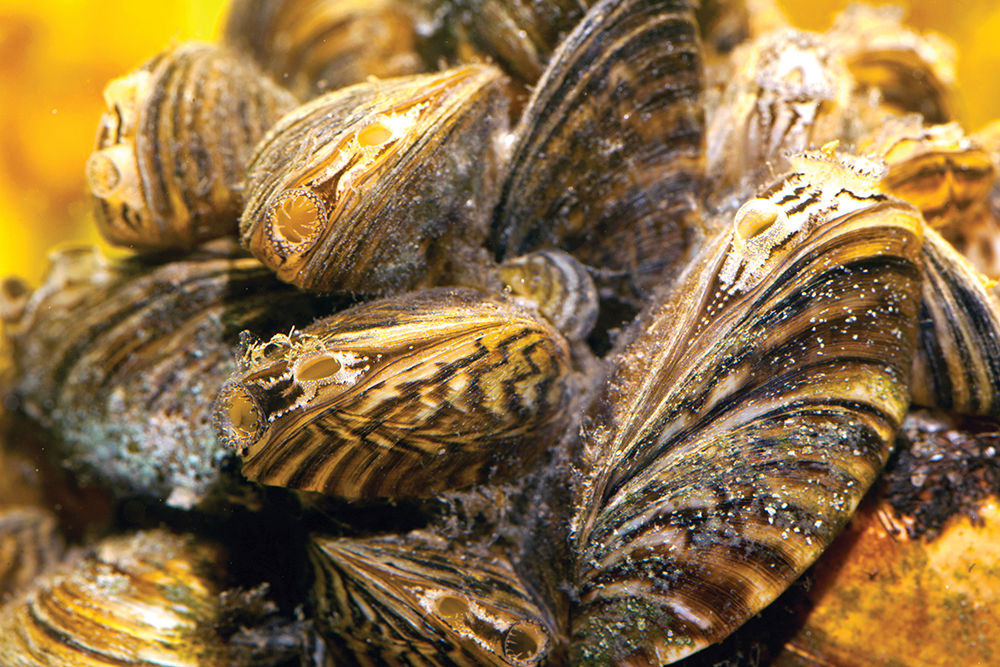
lllustrations by Tiger Bastard
